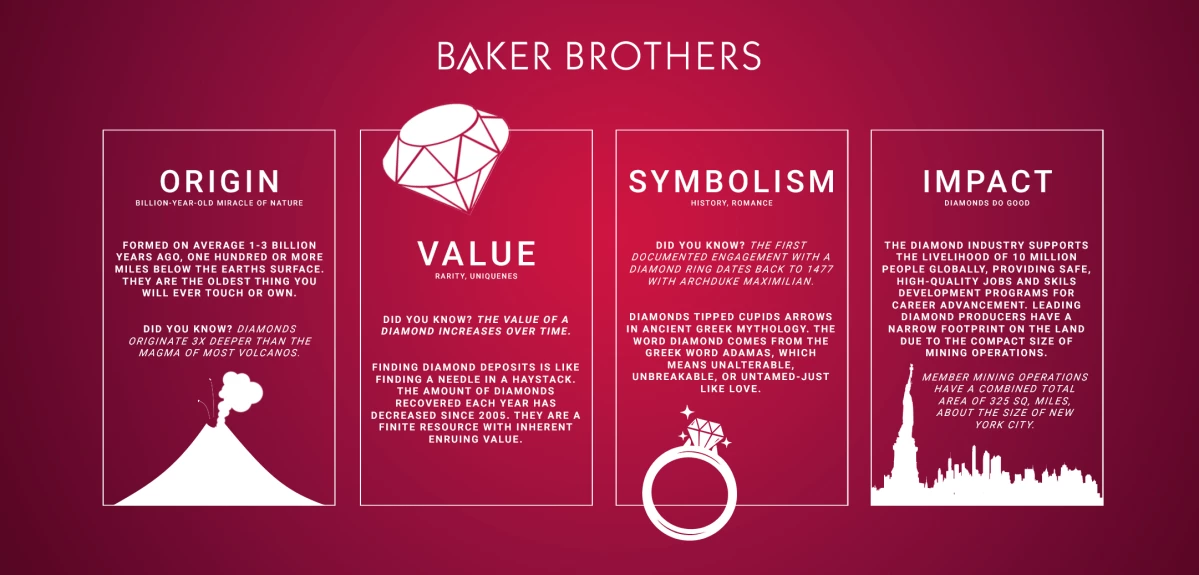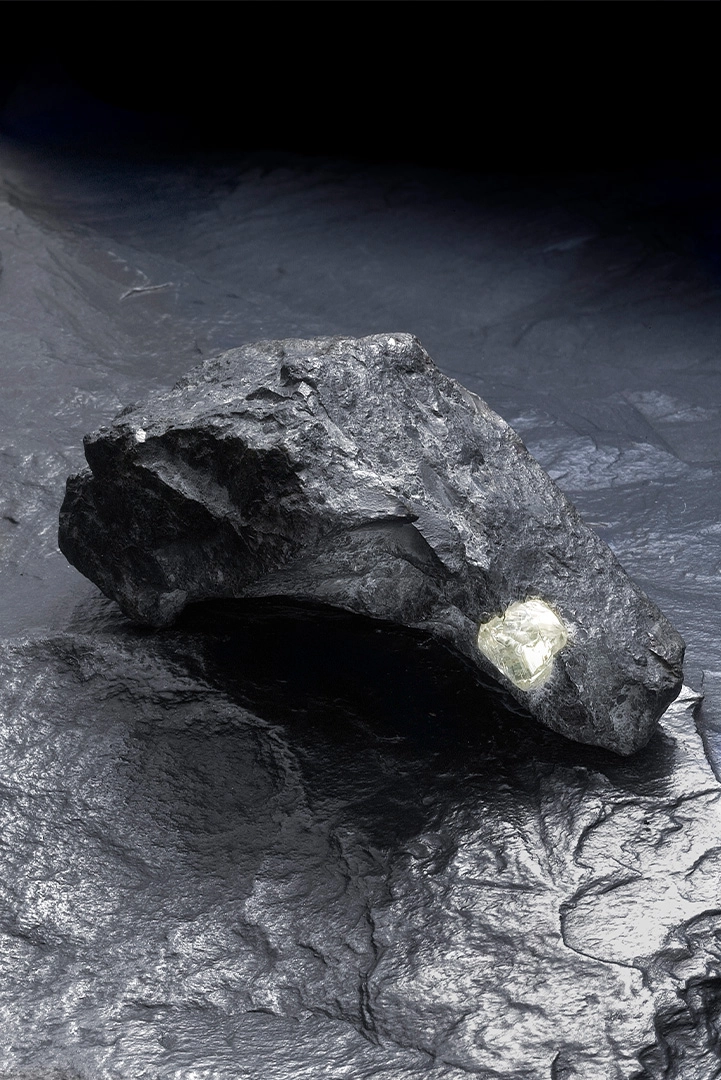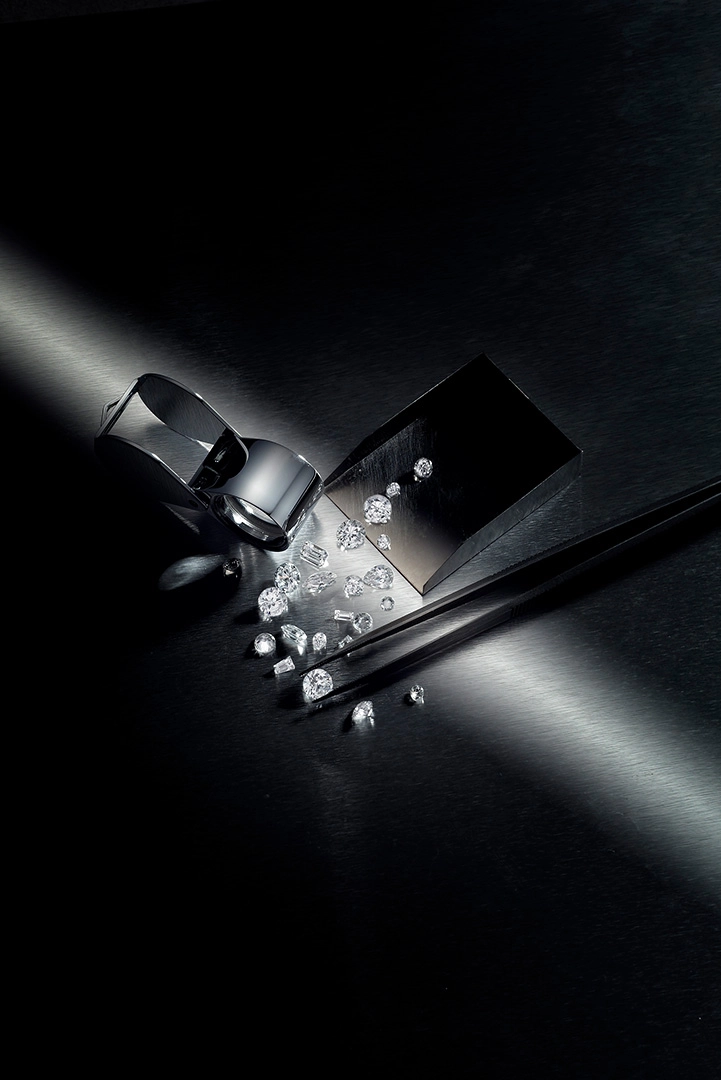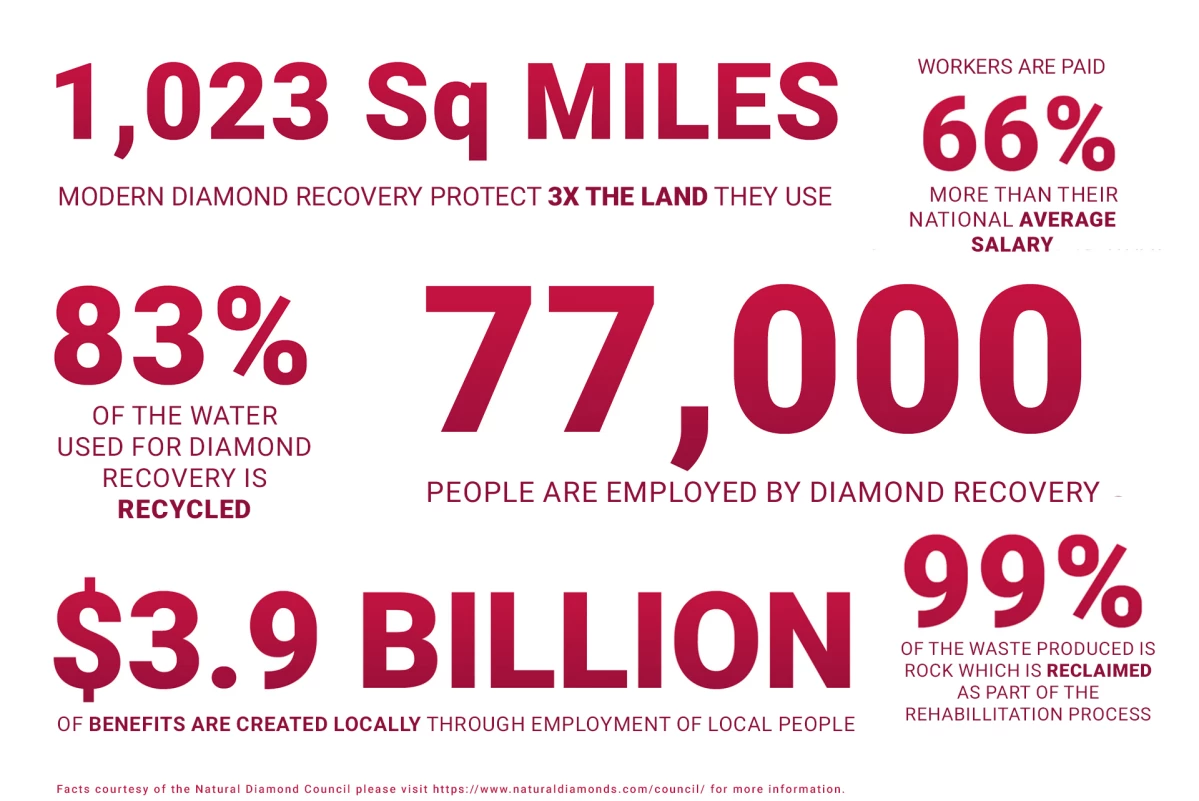ORDER WITH EXPRESS DELIVERY BY 12PM MONDAY 23RD DECEMBER FOR CHRISTMAS DELIVERY
WHAT ARE NATURAL DIAMONDS?
Natural diamonds are genuine, unique, billion-year-old miracles of nature with enduring emotional and financial value because of their rarity and preciousness. Modern diamond recovery is a highly regulated sector supporting the livelihood of 10 million people globally and ensures respect and long-term conservation and protection of the land on which it operates.
The mission of natural diamond suppliers is to advance the integrity of the modern diamond industry. To inspire and educate the consumer on incorrect and outdated misperceptions surrounding natural diamond recovery. This vision and ethos is one we truly believe in here at Baker Brothers Diamonds.
The mission of natural diamond suppliers is to advance the integrity of the modern diamond industry. To inspire and educate the consumer on incorrect and outdated misperceptions surrounding natural diamond recovery. This vision and ethos is one we truly believe in here at Baker Brothers Diamonds.

FREQUENTLY ASKED QUESTIONS ABOUT NATURAL DIAMONDS
“HOW DO I KNOW I AM BUYING AN ETHICAL DIAMOND?”
The diamond industry has worked hard to transform itself over the last 20 years. Today, conflict diamonds, are virtually eliminated from the market. through the UN-mandated Kimberley Process. The diamond industry also goes above and beyond the Kimberley Process to encompass people, planet, and business ethics. The industry abides by numerous international human rights frameworks and labour regulations, alongside country-specific rules to ensure it does business in the most responsible and sustainable way.
The diamond industry has worked hard to transform itself over the last 20 years. Today, conflict diamonds, are virtually eliminated from the market. through the UN-mandated Kimberley Process. The diamond industry also goes above and beyond the Kimberley Process to encompass people, planet, and business ethics. The industry abides by numerous international human rights frameworks and labour regulations, alongside country-specific rules to ensure it does business in the most responsible and sustainable way.
“ARE LABORATORY GROWN DIAMONDS UNIQUE?”
Laboratory grown diamonds are not unique—they are produced en masse in potentially unlimited quantities. Natural diamonds on the other hand are completely unique, like a snowflake or fingerprint, each one is different.
Laboratory grown diamonds are not unique—they are produced en masse in potentially unlimited quantities. Natural diamonds on the other hand are completely unique, like a snowflake or fingerprint, each one is different.

“IS DIAMOND RECOVERY HARMFUL TO PEOPLE?”
Modern diamond recovery provides safe, high-quality, high-paying career opportunities to people in remote regions of the world here job opportunities are otherwise limited. The industry puts the safety and well-being of their employees and contractors ahead of any other consideration. Employees of leading diamond producers are paid on average 66% more than the national average salary and receive nearly five times the living wage in his/her country.
Modern diamond recovery provides safe, high-quality, high-paying career opportunities to people in remote regions of the world here job opportunities are otherwise limited. The industry puts the safety and well-being of their employees and contractors ahead of any other consideration. Employees of leading diamond producers are paid on average 66% more than the national average salary and receive nearly five times the living wage in his/her country.
“ISN’T THE INDUSTRY DOMINATED BY A MONOPOLY?”
No. There is no monopoly in today’s diamond market. Spread across four continents, today’s largest diamond producers located in Canada, Africa, Siberia and Australia are either publicly traded corporations or State-owned enterprises. Today, there is no company that has a majority market share of diamond production, which means there is no possibility of stock-piling or artificial pricing. It’s a healthy, competitive market.
No. There is no monopoly in today’s diamond market. Spread across four continents, today’s largest diamond producers located in Canada, Africa, Siberia and Australia are either publicly traded corporations or State-owned enterprises. Today, there is no company that has a majority market share of diamond production, which means there is no possibility of stock-piling or artificial pricing. It’s a healthy, competitive market.

“ARE LABORATORY GROWN DIAMONDS MORE SOCIALLY CONSCIOUS THAN NATURAL DIAMONDS?”
No. The natural diamond industry supports the livelihood of 10 million people worldwide. Leading diamond producers create $16 billion of benefit annually for employees, communities and the environment—and 80% of these benefits are retained by local communities. The wealth generated by laboratory grown diamond companies largely benefits only a select few venture capitalists and investors who have yet to demonstrate similar socioeconomic contributions.
No. The natural diamond industry supports the livelihood of 10 million people worldwide. Leading diamond producers create $16 billion of benefit annually for employees, communities and the environment—and 80% of these benefits are retained by local communities. The wealth generated by laboratory grown diamond companies largely benefits only a select few venture capitalists and investors who have yet to demonstrate similar socioeconomic contributions.
“ARE LABORATORY GROWN DIAMONDS IDENTICAL TO NATURAL DIAMONDS? HOW CAN YOU TELL THEM APART?”
No—laboratory grown diamonds are not identical to natural diamonds. Their origin is the primary difference. Laboratory grown diamonds are mass produced in factories, located primarily in China, India and Singapore in industrial reactors. The rapid, artificial production process which occurs in just 2 weeks creates tell-tale marks within the stones, making them easily detectable with the right equipment.
No—laboratory grown diamonds are not identical to natural diamonds. Their origin is the primary difference. Laboratory grown diamonds are mass produced in factories, located primarily in China, India and Singapore in industrial reactors. The rapid, artificial production process which occurs in just 2 weeks creates tell-tale marks within the stones, making them easily detectable with the right equipment.







